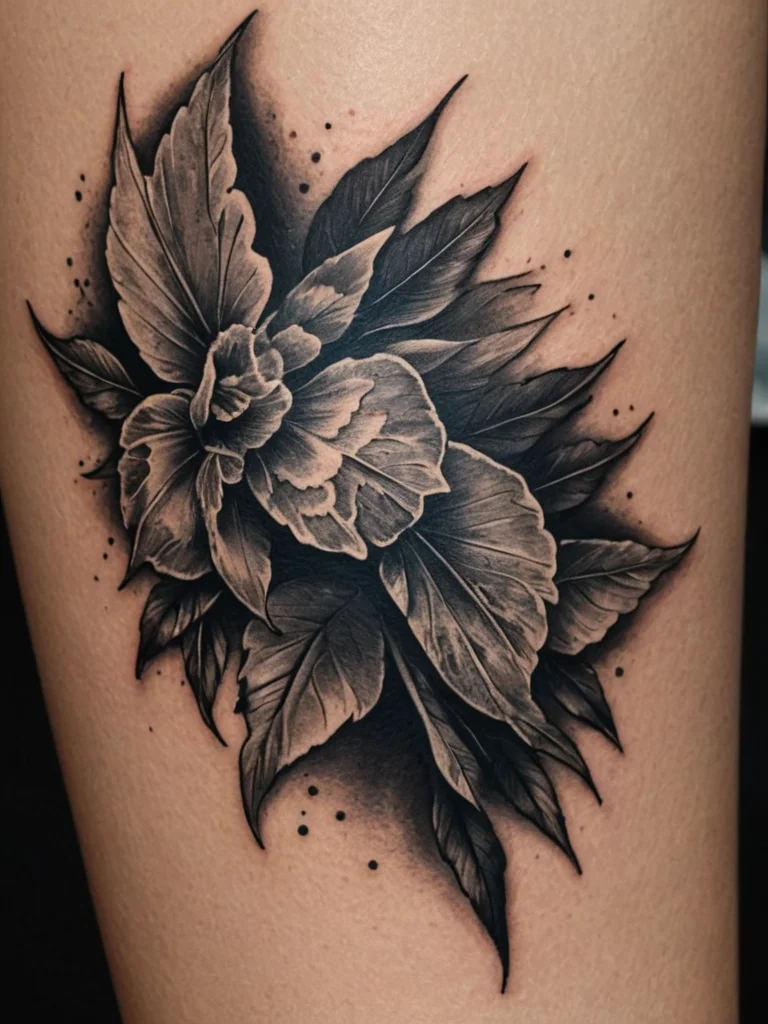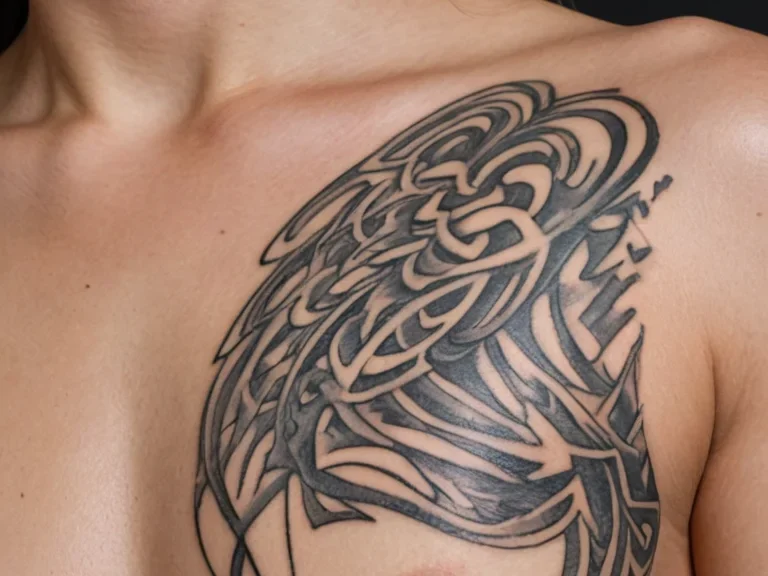Embarking on the journey of getting a tattoo is an exciting venture, filled with anticipation for a piece of art that will become a part of you. However, the canvas of the human body isn’t always uniform, and where you choose to place your ink can significantly impact the experience, particularly concerning pain and the technical execution of the design. Tattoo artists often encounter client choices that push the boundaries of both endurance and skill. Understanding which areas of the body present the greatest challenges, both for the client enduring the process and for the artist bringing the vision to life, is crucial for a successful and satisfying outcome. This article delves into the anatomy of pain and difficulty in tattooing, guiding you through the spots that demand extra consideration and preparation.
The painful truth about tattoo placement
The human body is a complex tapestry of nerves, bone, muscle, and skin, and the density of nerve endings, proximity to bone, and the thickness and elasticity of the skin all play a significant role in how much a tattoo will hurt. While pain is subjective and varies greatly from person to person, certain areas are universally acknowledged by both clients and tattoo artists as being more sensitive than others. These locations often lack the natural padding of fatty tissue, exposing delicate nerve endings and bone closer to the surface, making the constant vibration and penetration of the tattoo needle feel amplified. Artists also face unique challenges in these areas, requiring exceptional control and precision to achieve clean lines and smooth shading, often on irregular surfaces or areas with constant movement. It’s a dance between the client’s resilience and the artist’s expertise.
Top 10 most painful tattoo spots and why they hurt
Let’s explore the top contenders for the title of most painful places to get tattooed. While this list is based on common experiences and anatomical factors, remember that individual pain tolerance is a major variable.

- Ribs: Often cited as one of the most painful areas, the ribs are characterized by thin skin stretched directly over the rib cage. The constant vibration of the needle against the bone, coupled with the shallow depth of tissue, makes this an intensely uncomfortable experience. The intercostal muscles beneath the skin also tense up, adding to the sensation.
- Sternum: Similar to the ribs, the sternum area offers very little cushioning. The bone is prominent, and the skin is taut. The sensation here can be particularly sharp and jarring due to the high concentration of nerve endings in this central chest region.
- Spine (especially along the vertebrae): Tattooing directly on or very near the spine is a notorious pain zone. The spinal column is sensitive, and the lack of muscle or fat padding means the needle feels very close to the bone. Clients often report a deep, aching, and sometimes electric sensation as the needle works its way along the sensitive nerves.
- Elbows (especially the bony point): The pointy part of the elbow, the olecranon, is incredibly sensitive. The skin here is thin, and the bone is very close to the surface. Many describe the feeling as a constant, sharp jab directly into the bone, with the vibration amplifying the discomfort.
- Knees (especially the kneecap): Much like the elbows, the kneecap and the surrounding areas are bony and have less soft tissue. The skin is thin and can be stretched taut over the bone, leading to a sharp, stinging pain. The constant movement and stretching of the skin during the tattooing process can also exacerbate the discomfort.
- Armpits: This area is densely packed with nerve endings and lymphatic nodes, making it exceptionally sensitive. The skin is also thin and pliable, and the friction and vibration of the tattoo needle here can be quite intense and difficult to endure.
- Inner Thigh: While the outer thigh is generally more tolerable, the inner thigh is a different story. It contains more nerve endings, the skin is thinner, and the area is often more prone to chafing, which can increase sensitivity. The muscle here can also tense up.
- Feet and Ankles: These extremities are loaded with nerve endings and have very little padding. The bones of the feet and ankles are close to the skin, making tattoos here feel sharp and biting. The constant pressure and movement of the feet also contribute to a challenging healing process.
- Hands and Fingers: The skin on the hands and fingers is thin, and there’s minimal fat or muscle to cushion the bones. These areas also have a high concentration of nerve endings. Furthermore, the constant use and exposure of hands mean healing can be difficult, and ink retention can be an issue, often requiring frequent touch-ups.
- Groin and Genitals: This is arguably the most sensitive area on the body. The skin is thin, and the nerve density is extremely high. While many find the pain intense and almost unbearable, others describe a different kind of sensation, sometimes less sharp and more of a deep, throbbing ache. Tattooing these areas requires immense skill and understanding from the artist.
Beyond pain: factors making a tattoo location difficult (artist & client)
While pain is a primary concern, several other factors contribute to making certain tattoo locations more challenging for both the client and the artist. These considerations go beyond just the sensation of the needle and impact the longevity, clarity, and overall success of the tattoo.

- Skin Elasticity and Movement: Areas that are constantly stretching, bending, or moving, such as joints (knees, elbows, ankles) or areas with very loose skin (like the inner bicep or underarm), can make it difficult for an artist to maintain consistent line work and shading. The skin’s movement can cause ink to spread or blur, requiring the artist to adapt their technique significantly. For the client, holding still during these movements can be a challenge.
- Skin Texture and Thickness: The texture of the skin varies across the body. Some areas, like the palms of the hands or soles of the feet, have thick calluses that are notoriously difficult to tattoo with consistent ink saturation. Conversely, areas with very thin, delicate skin, like the inner ear or eyelids (though rarely tattooed), require extreme precision and a very light touch from the artist to avoid blowouts or scarring.
- Bone Proximity and Irregular Surfaces: As mentioned with the ribs and spine, areas where bone is close to the surface or where the surface is highly irregular present challenges for achieving smooth, even coverage. The artist must navigate contours and avoid applying too much pressure directly onto the bone, which can cause excessive pain and hinder ink deposit.
- Friction and Wear: Locations prone to high friction from clothing, shoes, or daily activities, such as the inner wrists, areas where socks or belts rub, or even the soles of feet, can make healing difficult and cause the tattoo to fade or blur over time. Artists must consider how the design will hold up against daily wear and tear.
- Visibility and Healing: While not directly a pain factor, the visibility of certain areas can influence the client’s comfort and how they manage the healing process. For instance, tattoos on the face or hands are constantly exposed and can be difficult to keep clean or protected from sun exposure, which is vital for healing and ink longevity.
- Artist’s Skill and Experience: It’s essential to acknowledge that the difficulty is also relative to the artist’s expertise. While a less experienced artist might struggle with a highly mobile or bony area, a seasoned professional with extensive experience in challenging placements can often achieve excellent results. Choosing an artist who specializes in or has a strong portfolio of work in the specific area you desire is paramount.
Preparing for the pain: tips for getting tattooed in difficult areas
If you’re set on getting a tattoo in one of these more challenging locations, proper preparation is key to managing the experience and ensuring the best possible outcome. Both the client and the artist play a role in making these sessions successful.

- Thorough Consultation: Discuss your chosen design and placement extensively with your tattoo artist beforehand. They can provide valuable insights into the specific challenges of the area, suggest design modifications to better suit the anatomy, and advise on the expected pain level and duration.
- Prioritize Rest and Hydration: Before your appointment, ensure you are well-rested and properly hydrated. Being physically and mentally prepared can significantly improve your ability to handle discomfort. Avoid alcohol and blood-thinning medications for at least 24 hours prior, as these can increase bleeding and potentially affect the tattooing process.
- Eat a Good Meal: Never go into a tattoo session on an empty stomach. Having a solid meal beforehand helps maintain your blood sugar levels, which can prevent lightheadedness or fainting, especially during longer sessions in sensitive areas.
- Wear Appropriate Clothing: Choose loose-fitting clothing that provides easy access to the tattoo area and won’t rub or irritate the fresh ink. For areas like the ribs or chest, a button-up shirt is often more comfortable than a t-shirt.
- Mindfulness and Breathing Techniques: Practice deep breathing exercises or mindfulness techniques. Focusing on your breath can help distract from the pain and keep your body more relaxed, making the process more manageable. Some clients find it helpful to bring headphones and listen to music or podcasts to further aid distraction.
- Communicate with Your Artist: Don’t hesitate to communicate with your artist during the session. If you need a short break, let them know. They are accustomed to working with clients and understand that endurance can vary. Honest communication ensures you remain as comfortable as possible.
- Consider Session Length: For very painful or large pieces in difficult areas, breaking the tattoo into multiple shorter sessions might be a more manageable approach than enduring one extremely long and potentially grueling appointment. Discuss this possibility with your artist.
- Aftercare is Crucial: Proper aftercare is paramount, especially in areas prone to friction or movement. Follow your artist’s instructions meticulously to ensure clean healing, prevent infection, and preserve the integrity of your tattoo.
Conclusion: Is a difficult tattoo worth the challenge?
The decision to get a tattoo in a difficult or painful area is a personal one, and it’s often driven by a deep desire for a specific placement that holds significant meaning or perfectly complements the body’s natural lines. While the physical discomfort and technical challenges are undeniable, many find the experience to be incredibly rewarding. The heightened sensation can, for some, even add a unique dimension to the process, connecting them more profoundly with the art being created on their skin. Furthermore, successfully navigating a challenging tattoo can be a testament to one’s commitment to self-expression and a demonstration of resilience. When planned meticulously, executed by a skilled artist, and embraced with the right preparation, a tattoo in a difficult spot can be a stunning and deeply personal piece of art that you’ll cherish for a lifetime. It’s about weighing the pain and difficulty against the profound satisfaction of bringing your vision to life in the most meaningful way possible.